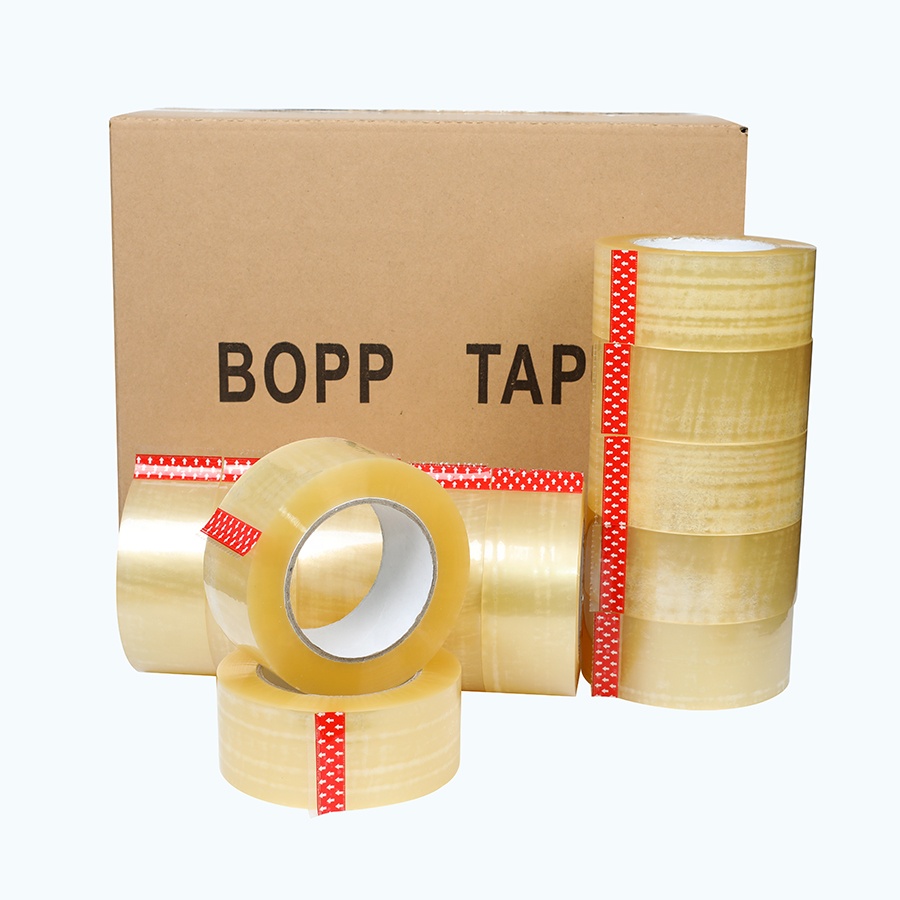The first recorded use of an adhesive tape dates way back over 150 years ago, in 1845. When a surgeon known as Dr. Horace Day used a rubber adhesive applied to strips of fabric, an invention he called ‘Surgical Tape’ would create the very first concept of adhesive tape.
Fast forward to today and there are now hundreds of adhesive tape variations, each designed for use in certain conditions. With the likes of paper, double sided, water activated, heat applied, and so many more tapes, the choices can be overwhelming.
But for every single packaging operation, this choice must be considered properly. From the delivery process, through to the material your tape will adhere to, as well as storage conditions, a tape must be chosen on a number of deciding factors.
To put things bluntly, choose the wrong tape and your package is unlikely to arrive in one piece. But pick the right tape and you’ll notice a huge rise in the success of your packaging operation.
In this article, we cover all you need to know about adhesive tape options so that you can make the right decision for your business.
Your adhesive tape options: Carriers & Adhesives
First of all, it’s important to gain a good understanding of what makes up an adhesive tape product. This will help with narrowing down your available options to give you the best solution based on your business’ situation.
Packaging tapes are made up of two main parts:
- The backing material, commonly known as the ‘carrier’
- The ‘sticky’ part, known as the adhesive
So, why is this important? Because different carriers can be combined with different adhesives to better suit different applications.
Let’s take a look at the different carrier and adhesive options in more detail, with examples of situations they’re most suitable for.
Carriers
The three most common types of carriers for packaging tape are:
- Polypropylene – A strong and durable material perfect for all general sealing tasks. Due top its strength, Polypropylene cannot be torn by hand so is applied using a tape dispenser. This is generally the most economical packaging tape and a great budget alternative to Vinyl.
- Vinyl – Being both stronger and thicker Vinyl can withstand more tension than Polypropylene. It is also more resistant to temperature extremes, making it suitable for cold and freezer storage environments.
- Paper – Paper based packaging tapes eliminate the plastic aspect of the tape, making it a more sustainable solution for those looking to decrease plastic. Additionally, the customer in most cases doesn’t need to remove it from the cardboard packaging in order to recycle it.
Adhesives
The three most common types of adhesives for packaging tape are:
Hotmelt
Generally used in combination with polypropylene carriers for strength, durability and tear resistance. Hotmelt is often the carton sealing tape of choice due to its low cost, initial quick tack properties and reliable bond to corrugate materials. Benefits of using hotmelt as an adhesive include:
- Solid performance in temperatures between 7-48°C
- High initial quick tack properties to corrugated products
- High tensile strength means it can withstand higher forces before tearing
Water Based Acrylic
With recent advancements in material technology, acrylic carton sealing tape has been increasingly popular. Water based acrylic offers an all-round general purpose packaging tape and can be used on a wide range of surfaces. Cardboard, metal, glass, wood, and many plastics can all be adhered to effectively.
Its superior temperature resistance, clarity, and resistance to yellowing make acrylic the tape of choice when appearance is a key consideration – such as in the consumer product and food packaging industries.
- Thermal stability from 0-60°C
- Resistant to ageing, weathering, sunlight, and discoloration
- Can be stored and used over long periods with exceptional holding power
Solvent
This type of adhesive quickly forms a strong, lasting bond and is best for carton sealing on inconsistent surfaces. It also performs well in extreme temperatures, high humidity, and dampness. However, it will yellow with age.
- Aggressive adhesion properties for reliable, long-term packaging
- Especially suited to recycled corrugated applications and cold packaging
- Ideal for a wide variety of applications and surface conditions
Post time: Nov-05-2023






